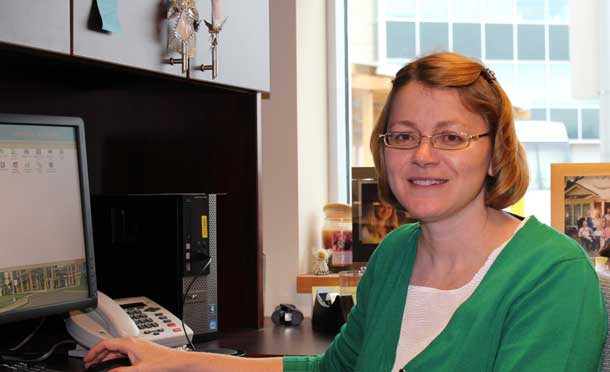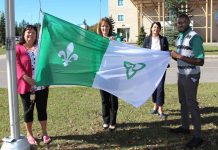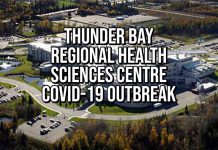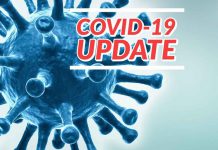

THUNDER BAY – HEALTH – When Radiation Oncologist Dr. Margaret Anthes travelled to her family cottage in Parry Sound last summer, she did what most people do on vacation: swimming, sailing and visiting with family and friends. But she was also able to see patients in Thunder Bay and the region, arrange diagnostic imaging and organize and plan their radiation treatments, thanks to a new electronic medical record system for cancer patients at Thunder Bay Regional Health Sciences Centre (TBRHSC).
MOSAIQ is an oncology Electronic Medical Record (EMR) system that was implemented in May 2013 at TBRHSC’s Regional Cancer Care Northwest (RCC NW) and at all cancer care partner hospitals in the region. MOSAIQ connects the cancer service providers in the region to the Regional Cancer Care Northwest electronic chart, allowing all care providers to access decision-making tools and clinical information to deliver safe, timely, and effective patient care. Previously, the Regional Cancer Program used paper charts to document and manage patients through the continuum of care. A patient could have as many as five charts, making access to information and coordination of care cumbersome, particularly when patients are receiving cancer services in a number of different locations.
Sharon McKinnon, Manager, Cancer Treatment Programs, says the use of EMR is improving both quality and safety by ensuring patient information is legible and organized. “Unlike a paper record, an EMR can’t be lost,” says McKinnon. “When we solely used paper charts, the treatment record was separate. If we needed to send a record by fax, a busy line or issue with the fax machine could cause delays for the patient. Now, authorized staff throughout the region have access to the same information we do.”
Canada Health Infoway, an independent, not-for-profit organization funded by the federal government whose purpose is to realize the vision of healthier Canadians through innovative digital health solutions, provided $2 million to cover more than half of the costs associated with implementing the system.
“Infoway’s investment in the MOSAIQ system is one of the ways we are working with our partners in Northern Ontario and across the country to help increase Canadians’ access to health services and improve the patient experience,” said Richard Alvarez, President and CEO, Canada Health Infoway.
Not only is MOSAIQ supporting care closer to home, reducing paperwork and eliminating duplications of patient histories and tests, it is also improving efficiency in the delivery of care.
McKinnon says Dr. Anthes saw the potential of MOSAIQ to allow continuity of care. “Because Dr. Anthes was able to do consults with her patients remotely using MOSAIQ and the Ontario Telemedicine Network, we didn’t need to find a locum, which saved patients from repeating their histories and duplicating medical services.
Patients who have been coming to Regional Cancer Care Northwest for years bond with their doctor and nurses. For new patients, it meant not having to wait.” Dr. Anthes says she was glad to be able to connect and ensure continuity of care for her patients while away on vacation. “I saw up to 6 new patients per week, so that means there were 18 patients who didn’t have to wait to be seen. It was not disruptive to my holiday and it allowed patients to continue flowing through the system.”






